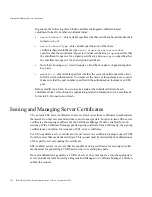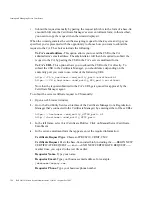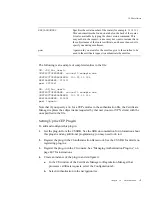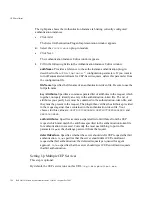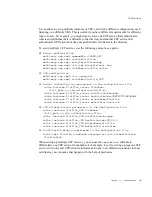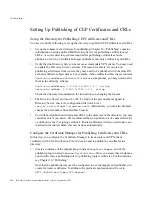
Testing Your Enrollment Setup
406
Red Hat Certificate System Administrator’s Guide • September 2005
5.
When you enter the correct password, the client generates the key pair.
Do not interrupt the key-generation process. Upon completion of the key generation,
the request is submitted to the server for certificate issuance. The server subjects the
request to the currently configured policy rules and issues the certificate only if the
request passes all the policy rules.
Upon receipt of a notification about the certificate issuance, install the certificate in
your browser.
6.
Verify that the certificate is installed in the browser’s certificate database; for example,
in Communicator you can open the Security Info window and verify that the certificate
is listed in there.
7.
If you’ve set up the directory- and PIN-based authentication with PIN removal, reenroll
for another certificate using the same PIN. Your request should get rejected.
8.
If you’ve set up the portal enrollment, verify that an entry for the user is created in the
directory. For example, you can point your browser to the portal directory and find out
if an entry for the user for whom you requested the certificate exists.
In the URL field, type
ldap://<hostname>:<port>/<base_dn>??sub?(uid=<user_id>)
, substituting
<hostname>
with the fully qualified host name of the Directory Server,
<port_number>
with the port number at which the Directory Server is listening to
authentication requests from the Certificate Manager
<base_dn>
with the DN to start
searching for the user’s entry, and
<user_id>
with the ID of the user for whom you
requested the certificate.
For example, if the directory host name is
corpDirectory
, port number is
389
, base
DN is
O=example.com
, and user’s ID is
jdoe
, the URL would look like this:
ldap://corpDirectory:389/O=example.com??sub?(uid=jdoe)
In the resulting page, look for the user’s credentials and verify that they match what
you specified in the enrollment form. If you’ve configured CS to publish certificates to
the same directory (Chapter 16, “Publishing”), you will be able to see the
certificate-related information; it typically includes information such as the owner of
the certificate, the CA that has issued the certificate, the serial number, the validity
period, and the certificate fingerprint.
Содержание CERTIFICATE 7.1 ADMINISTRATOR
Страница 1: ...Administrator s Guide Red Hat Certificate System Version7 1 September 2005 ...
Страница 22: ...22 Red Hat Certificate System Administrator s Guide September 2005 ...
Страница 128: ...Cloning a CA 128 Red Hat Certificate System Administrator s Guide September 2005 ...
Страница 230: ...Configuring Key Archival and Recovery Process 230 Red Hat Certificate System Administrator s Guide September 2005 ...
Страница 234: ...Enterprise Security Client 234 Red Hat Certificate System Administrator s Guide September 2005 ...
Страница 368: ...ACL Reference 368 Red Hat Certificate System Administrator s Guide September 2005 ...
Страница 460: ...Constraints Reference 460 Red Hat Certificate System Administrator s Guide September 2005 ...
Страница 592: ...CRL Extension Reference 592 Red Hat Certificate System Administrator s Guide September 2005 ...
Страница 676: ...Cloning the Data Recovery Manager 676 Red Hat Certificate System Administrator s Guide September 2005 ...
Страница 688: ...Security Requirements for the IT Environment 688 Red Hat Certificate System Administrator s Guide September 2005 ...
Страница 720: ...1 3 Organization Security Policies 720 Red Hat Certificate System Administrator s Guide September 2005 ...

